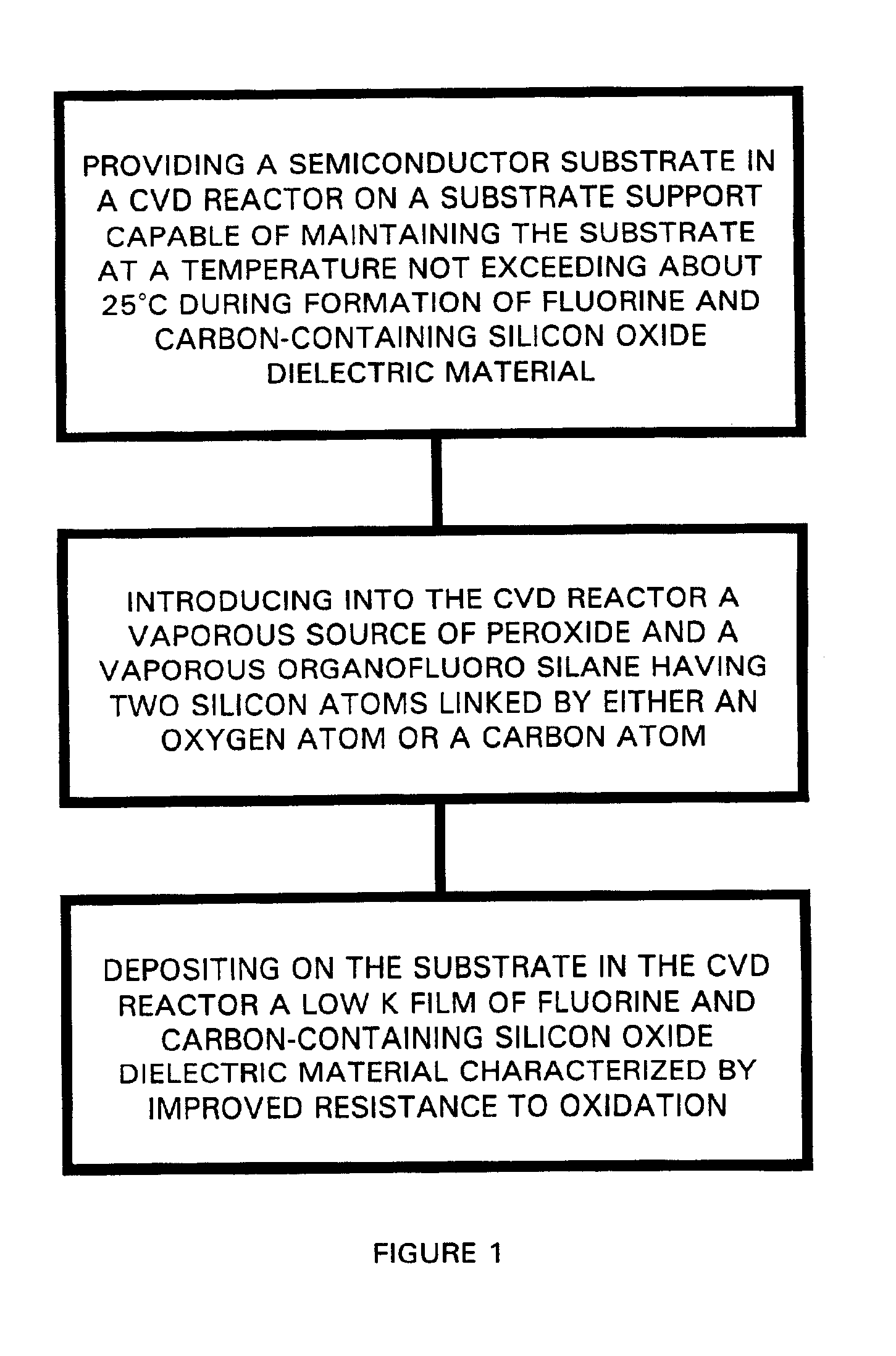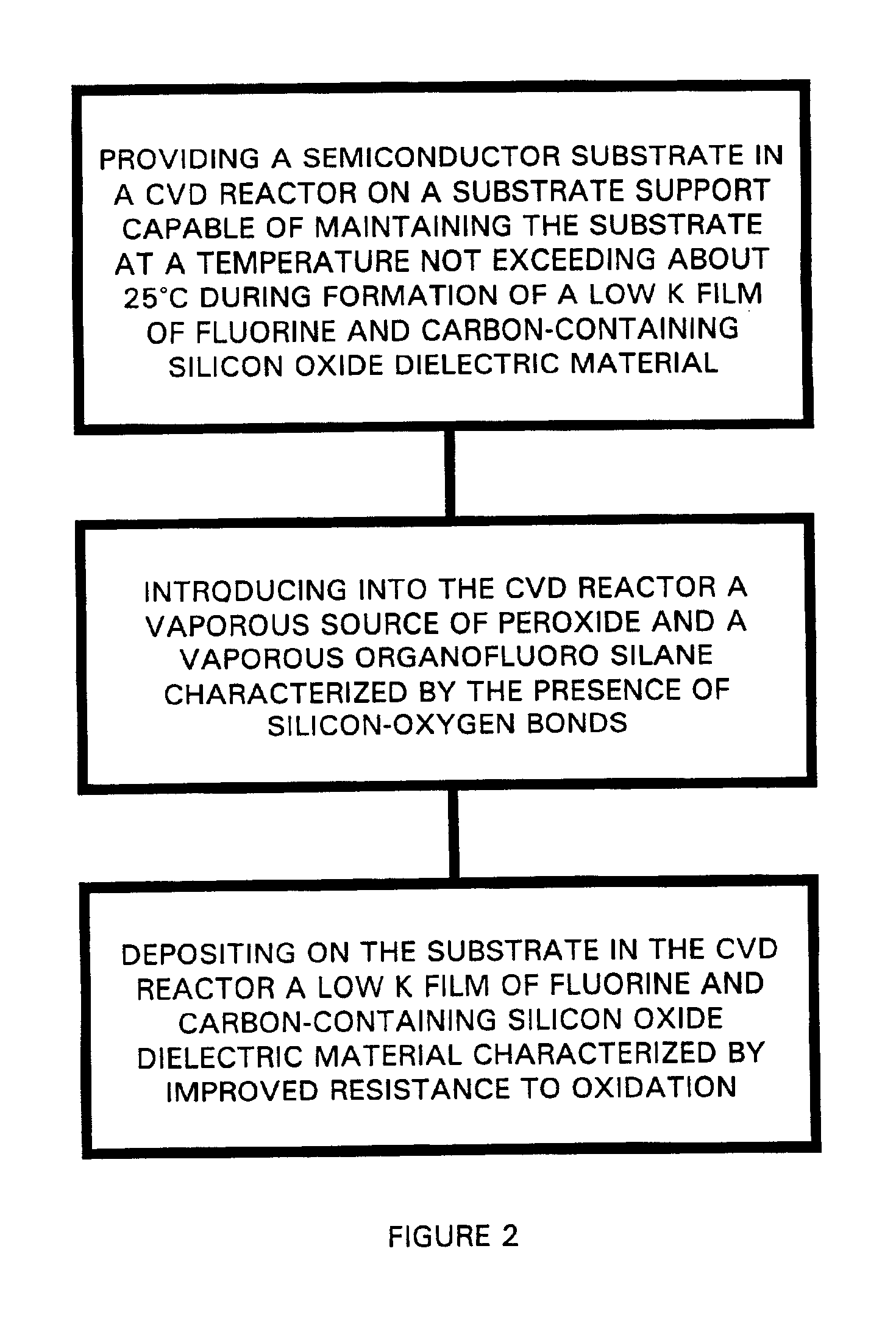Process for forming a low dielectric constant fluorine and carbon-containing silicon oxide dielectric material
a technology of fluorine and carbon-containing silicon oxide, which is applied in the field of integrated circuit structures, can solve the problems of reducing the capacitance of the dielectric material, destroying the incorporated hydrocarbons, and losing speed and increasing cross-talk
- Summary
- Abstract
- Description
- Claims
- Application Information
AI Technical Summary
Benefits of technology
Problems solved by technology
Method used
Image
Examples
example 1
The following example demonstrates the process of the invention in the formation of a low k fluorine and carbon-containing silicon oxide dielectric material at low temperature using the mild oxidizing agent, hydrogen peroxide.
Di-trifluoromethyl-disiloxane (CF3)H2SiOSiH2(CF3) and hydrogen peroxide can be introduced into a reaction chamber containing a cooled substrate support therein on which is mounted a silicon substrate on which the reaction product will deposit. The reaction chamber is advantageously maintained at a pressure of about 1-5 Torr. Both the di-trifluoromethyl-disiloxane and the hydrogen peroxide are introduced into the chamber in a gaseous or vaporous phase. The delivery system for the reactants is maintained at about 100° C., which ensures delivery of the reactants into the chamber as gases or vapors. Flow rates of the individual reactants will depend upon chamber size and will also vary with the particular reactants. During the reaction and deposition, the temperatu...
example 2
The following example demonstrates the process of the invention in the formation of a low k fluorine and carbon-containing silicon oxide dielectric material using the strong oxidizing agent, ozone.
Di-trifluoromethyl-tetramethyl-disiloxane (CF3)(CH3)2SiOSi(CH3)2CF3 and ozone can be introduced into a reaction chamber containing a silicon substrate on which the reaction product will deposit. The reaction chamber is advantageously maintained at a pressure of about 760 Torr. Both the di-trifluoromethyl-tetramethyl-disiloxane and the ozone are introduced into the chamber in a gaseous or vaporous phase. Flow rates of the individual reactants will depend upon chamber size and will also vary with the particular reactants. During the reaction and deposition, the temperature of the substrate support in the reaction chamber is maintained at a temperature of about 350° C. The reaction and deposition is carried out for a period of time sufficient to form the layer of low k fluorine and carbon-con...
PUM
| Property | Measurement | Unit |
|---|---|---|
| Dielectric constant | aaaaa | aaaaa |
Abstract
Description
Claims
Application Information
 Login to View More
Login to View More - R&D
- Intellectual Property
- Life Sciences
- Materials
- Tech Scout
- Unparalleled Data Quality
- Higher Quality Content
- 60% Fewer Hallucinations
Browse by: Latest US Patents, China's latest patents, Technical Efficacy Thesaurus, Application Domain, Technology Topic, Popular Technical Reports.
© 2025 PatSnap. All rights reserved.Legal|Privacy policy|Modern Slavery Act Transparency Statement|Sitemap|About US| Contact US: help@patsnap.com



